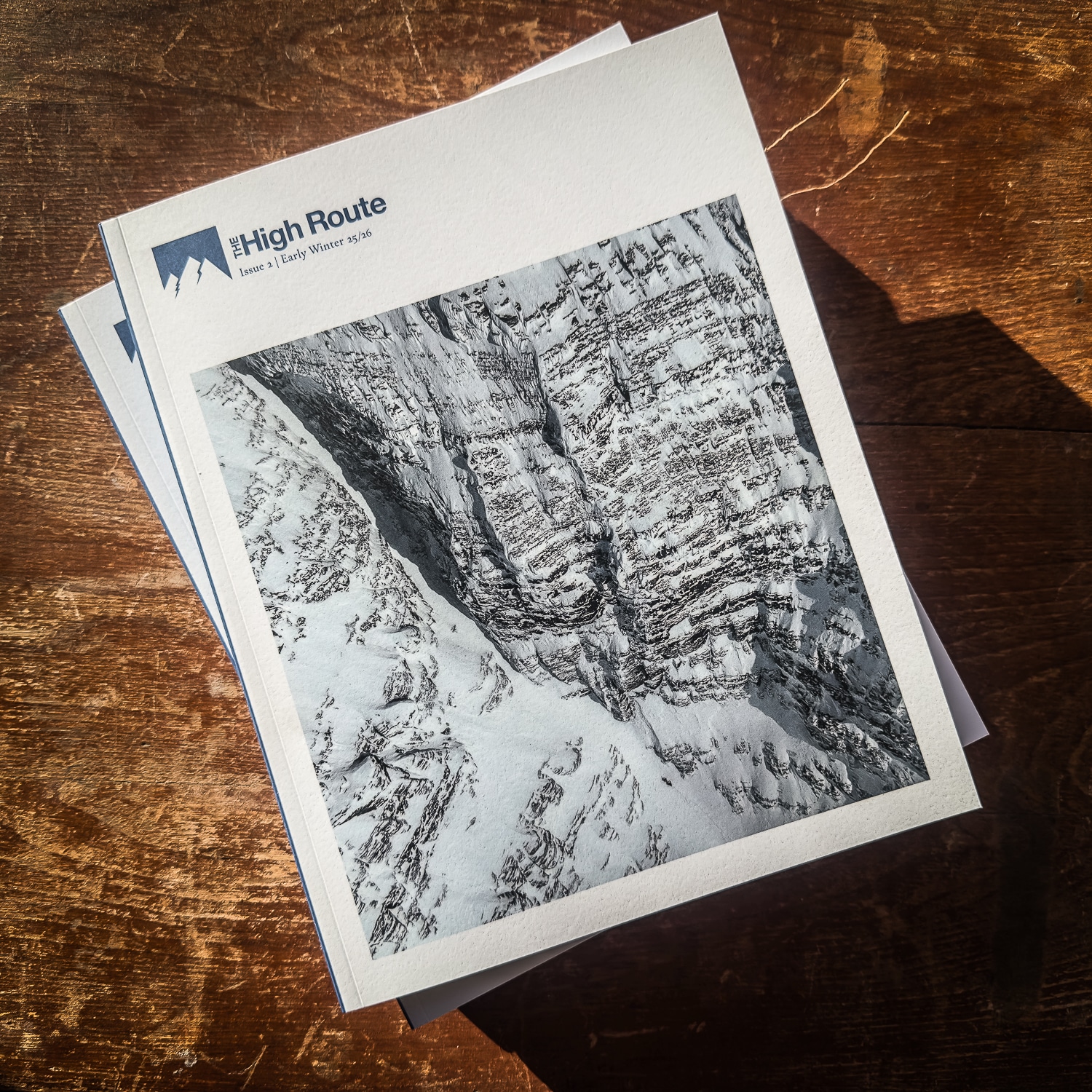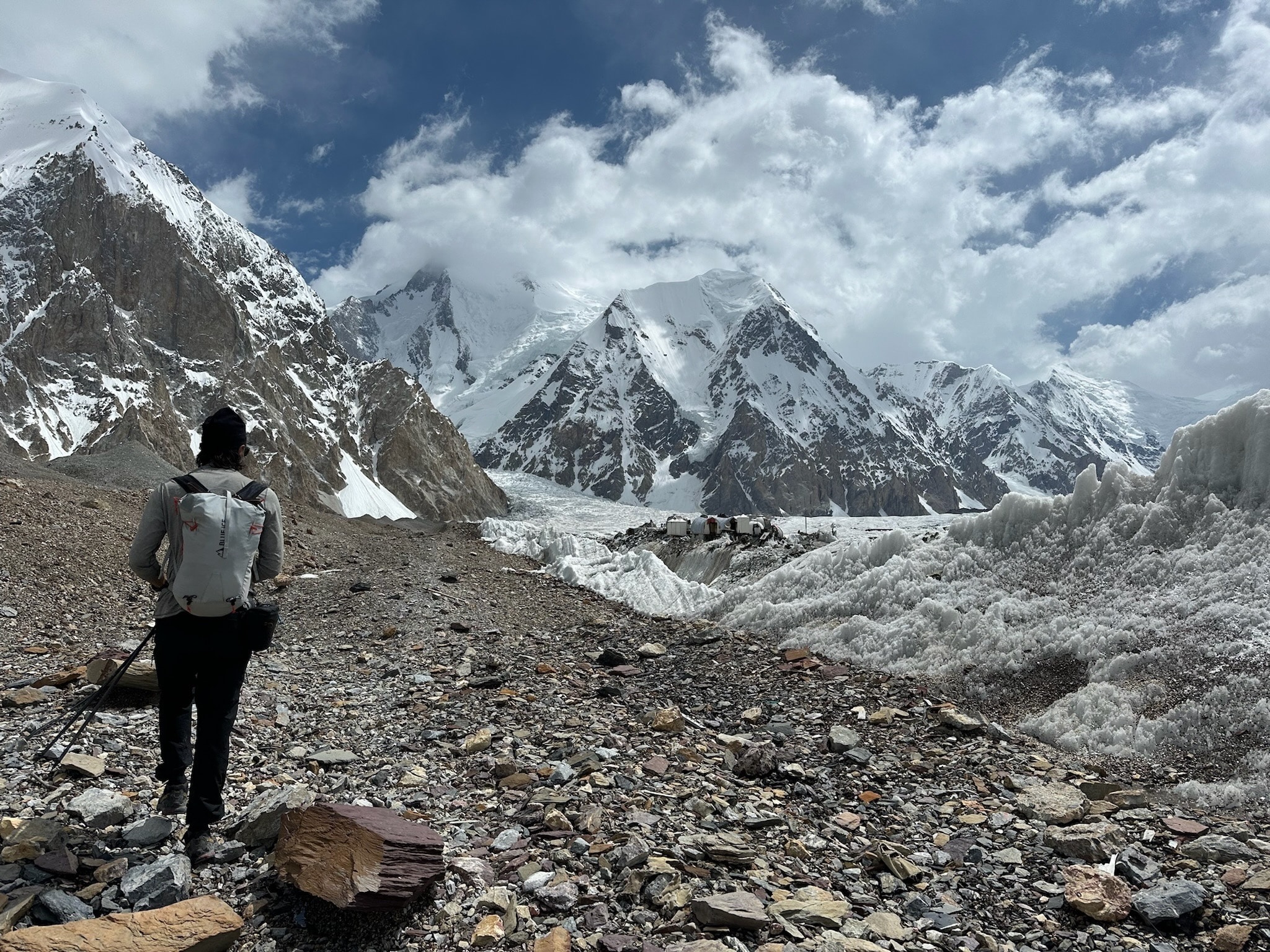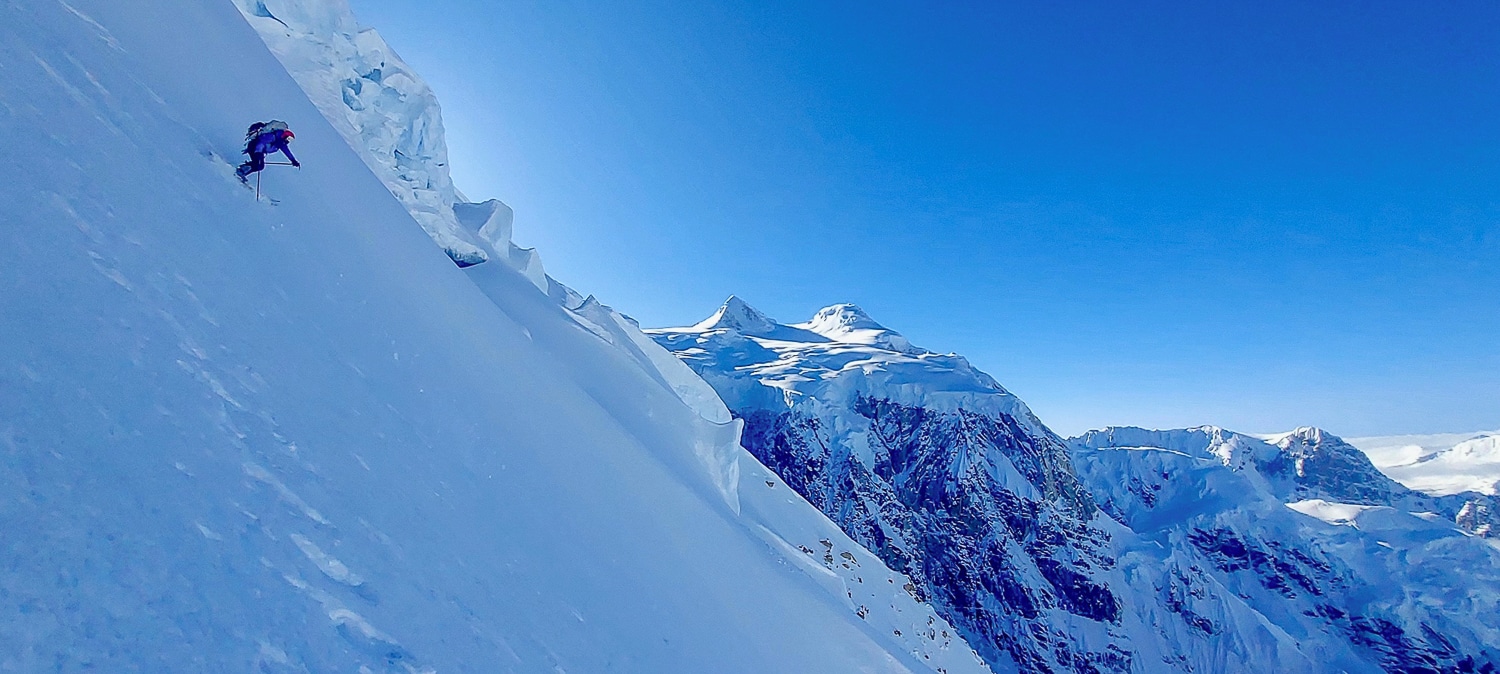Let’s begin this final review with a small survey where N=2. Skimo.co, under their “touring” subheading for boots, lists over 50 different boots. Cripple Creek Backcountry under “ski mountaineering” boots filters out nearly 40 boots. This is also not a scientific survey, and of those respective selections, some boots might be discontinued, some might be miscategorized, and some might be total duds. The point is that looking for a boot that fits and meets the design and performance characteristics you seek shouldn’t be a herculean task. And should you land on the La Sportiva Kilo as a boot that fits, my guess is you’ll form a somewhat long-term relationship. So far, the Kilo has been a great boot.

More on the Kilo
Fit
The Kilo’s fit doesn’t scream extremes. The heel fit is average to trending beyond that. Tourers with seriously narrow heels might find the heel pocket a bit wide. While adequate for a stock liner, I’ll also comment that the liner could use some more foam and proper molding in the heel zone. (More on the liner in a bit.)
The instep, for me, feels higher than the Scarpa LT and XTs, and lower than the Salomon S/Lab Summit. From my perspective, the instep aligns with the fit of the Dynafit Blacklight series. I use a Blue Superfeet insole to replace the stock insole.
The last is listed at 100.5 mm and provides ample room for my toes to splay. The widest point of my instep, measured with a caliper with half body weight on the foot, is 100 mm. The forefoot/toe box is not snug even with the Z-buckle excessively cranked down. This leads me to believe the Kilo would accommodate some foot swelling on a hot or multi-day tour. (I did not heat mold this liner.) The Kilo is the first 1 kg class boot that I’ve used in a few years without a BOA or Twistfit closure on the boot lower. Micro-adjusting is easier with a BOA, yet after a few tours, I was able to adjust the buckle arm length and ladder placement to fine-tune the Z-buckle to compress my instep and hold my heel “mostly” down when touring without over-tightening the buckle. La Sportiva calls the Z-buckle and plastic overlay combo the Force System. It’s a pretty simple design that provides sufficient force to keep the foot secure. During my initial fitting tweaks, of which there weren’t many, I mentioned to a few boot-nerds that I thought the plastic overlay was far up on my instep, offering a different sensation from BOA type systems, which apply pressure (as the tension system closes) over more of the foot’s instep. From what I recall, I was told that some tourers had complained that Z-buckle systems were fitted too low over the instep and that La Sportiva had likely moved in the right direction by placing the buckle/plastic overlay slightly higher. My take is that the system works; it’s just that I’d become a bit hardwired and correlate higher ski and skinning performance with a boot where I felt pressure over most of my instep.
Regarding the upper fit, I’m in the skinny-calf camp. Yet, the boot upper isn’t excessively roomy. It’s as snug as I want it to be while skinning (which is somewhat loose), while the single ladder buckle and excellent cam-lock powerstrap crank down sufficiently for descents. If you are used to adding foam on the liner tongue to reduce upper shell volume, you likely won’t have to with the Kilo.
I’m a solid 27-27.5 foot, and the Kilo in the 27.5 is a solid performance-comfort blend for me.

The Skinning
I’m going to continue with fit. As mentioned, I’ve got what seems like skinny heels, too. If you’ve read my boot reviews, I most often employ EZ fit heels socks, which, when new, are 2mm thick. (I also use these to prevent blisters—I think I’m superstitious at this point.) With the Z-buckle closed over the second ladder position, I’ve got ample pressure to keep my heel comfortably in place, with little lift, and not too much pressure over my instep.
I loosen the upper buckle and powerstrap while skinning. You do you, but for my tastes, this has proven an effective means to tap into the full 70 degrees of advertised ROM. And, this is, relative to most other boots in this class, low-fiction ROM. There’s legit buzz about the Kilo’s walkability. Believe it. It’s not only the skinning, but the booting and cramponing benefit from this attribute. On a ski traverse last spring, I walked about 1.5 days in a Dynafit Blacklight. At the time, the walking seemed fine enough: we were slogging. Walking in the Kilo, if that’s part of the plan or a consequence of a poor choice, won’t be regrettable, and might be preferred over other comparable models.
All things are relative. For resort uphillers seeking a fitness-oriented boot that provides solid skiing cred, the Kilo provides, but it won’t feel like your legit skimo boot. By design, regarding ROM/friction, it is the in-betweener—between the Stratos Hybrid and the Skorpius series (and the recently announced Kilo XTR to replace the Skorpius CR II).
Food for thought. Although a niche of a niche, I wonder if the Kilo might be an option for high-end ski alpinism. With some clever tinkering, it might be easy and functional to modify the cuff pivots and create an easily removable cuff for when the mixed and ice climbing get more serious. It’s just something I’ve been thinking of, as the Kilo’s walkability with the cuff remains excellent and could be a great choice for those with a lot of technical terrain to cover before clicking into bindings. As noted, when it’s time to descend, the Kilo has you more than covered.
Transitions
Transitions could have several looks depending on your style and need for speed. But overall, the Kilo transitions efficiently. I throw the ski-walk lever down and lock in. (That’s a smooth and easy process). I reset the Z-buckle from the 2nd ladder to the 4th. I crank the cam-lock power strap tight and set the upper cuff buckle to the 4th or 5th setting. Depending on what you are used to, you might find it fiddly. I find it un-fiddly. The one thing to note, and I’ve not got a good solution for this yet, is the liner tongues tend to shift a bit while skinning. I don’t notice the tongue shifting , so I often forget to check for proper alignment when transitioning. Take note (this includes me): check for proper tongue alignment when transitioning.
The Skiing
When Gavin and I first eyed images of the Kilo, we suspected it would be a soft-flexing boot. The boot’s lower and upper are composed of Grilamid Bio-Based LF Carbon. (Carbon-infused Grilamid seems to be the shell material of choice these days for fabbing stiffish boots at somewhat minimal weight.) I posited the boots would be soft-flexing due to the tongueless design coupled with what appears to be a liberal amount of the upper and lower boot portions lacking any Grilamid/carbon as they are cutout.
With all three fasteners (2 buckles and powerstrap) batoned down tight for performance, the forward and lateral flex of the Kilo felt stiff. The tasting notes, if you will, are more subtle. I used this boot on a pair of DPS RP 112s (184cm) in very light snow, and there was no problem pushing these planks around. The caveat is that if you use this class boot with larger skis, which applies to the Kilo, the snow must be forgiving—read as dry light powder.
For those in the drier climates, the Kilo could be part of an excellent lightweight powder skiing setup.
But, mostly, I used the Kilo with a 169 cm Rossignol Escaper 97 Nano—a ski weighing 1315 g/ski. This was a sweet pairing for firm, steep snow, meadow skipping, and cushy 3D snow (read as not refrozen or heavy variable snow). For those keen on firm conditions that sound and feel like ice, the Kilo was stable laterally descending groomers at high speeds or with slow and steady meticulous off-piste jump turns. The Kilo is more than at home driving skis in corn. I’m not a super big human at 5’ 10” and 160 pounds, so maybe that makes the Kilo feel a bit stiffer, flexing forward and laterally.
If you are a resort uphiller and love carving big-radius or small-radius turns, with the common thread being that you like to drive your skis with some force, the Kilo shouldn’t disappoint. They aren’t mushy. You shouldn’t bottom out the flex. I cannot say that would be true of linebackers and linemen, though.
I’m not delusional anymore. I used to think that, in my home range, a lightweight touring boot could sufficiently drive any ski all the time. And all this gets redundant with touring boot reviews, as it’s said over and over as a qualifier…under the right conditions. The Kilo, like the Scarpa XT, Dynafit Blacklight, and Tecnica Zero G Peak Carbon, under the right conditions, are suitable for bigger skis. But when the snow is heavier or more 3D, a beefier boot will serve you better if you tend to ski with more speed and freeride intent. Over the weekend, I scurried to get some higher tempo efforts and wore the Kilos with the Rossis. All good. The Kilo has a somewhat broad niche, from skimo enthusiasts to big traverses and legit ski mountaineering. I then swapped out into the Tecnica Zero G Tour Pro, a four-buckle + power strap boot, and the Noctas for a different tour-ski experience.
The Kilo’s forward lean can be set at either 12° & 14°. I prefer a bit more forward lean; even at the 14° setting, I wanted a few more degrees of lean. That’s just my preference. With what feels like a more upright stance, I’ve become accustomed to really driving my shins forward to engage the flex. Pushing through the range of flex feels consistent, and the give, like many boots in this class, is derived from a slight bellowing of the Grilamid in front of the cuff pivots.
Almost There
I do find a few things about the Kilo wanting. I understand weight and performance are a fine balance in a boot like this. However, higher-density foam, used strategically, has significant upsides for fit. While I appreciate the plastic on the tongue’s liner and back cuff for enhanced rigidity, it’s still a pretty minimalist liner—especially when eyeing the new Fischer Travers Carbon Pro’s liner. If La Sportiva made minor, yet more judicious use of some molded foam, I’d be more satisfied . I’m not thinking of a wholesale liner reboot. I did place a more performance-oriented liner in the Kilo on a few occasions. While I found a very slight improvement in downhill performance, the Kilo’s outstanding ROM was diminished. The stock liner serves a purpose, it’s gets you out on the skintrack. But, just a few more tweaks and a few more grams of foam, and the liner would meet the shell’s high standards.
I do see a potential durability flaw on the Kilo. A small portion of the plastic overlay, part of the Z-buckle’s Force system, abrades and bites into the gaiter fabric covering the boot’s instep. The abrasion was an issue only when skinning. I noticed the wear and tear after my 10th tour or so. I had no clear and obvious fix other than finding some rubbery patches included with my Exped inflatable pad. I trimmed/shaped and adhered the patches with fabric glue, and solved the problem. The patch has lasted for 2+ months—I should probably reapply some fabric glue at this point. (I did posit using a dremel and cutting/sanding down the plastic overlay’s leading edge. I still may do that, but I wanted to see if I could get away with a simpler fix.) I’m guessing I’m not the only person who has noticed this. Maybe La Sportiva will include some robust adhesive patches in the box for next season.


Lastly, gear reviews are based on trust. And so, although I’m digging this boot, I haven’t spent a full spring season (April into June) scrambling around sharp-rocked and decaying volcanoes here in the PNW to comment on the Kilo’s sole durability. On the occasions I’ve poked around on a rocky approach, it appears the rubber will hold up.
Where I Land with the Kilo
I’m digging the Kilo. La Sportiva should be stoked about the outcome of their iterative process. The Kilo should not be overlooked. Getting in and out of the Kilo is easy and I imagine those using the Kilo on self-supported trips when temps are well below freezing will appreciate this attribute. Holistically considering fit, skinning, and skiing performance, it blends supreme walkability/climbing with excellent downhill performance in its intended space.
Kilo Specs Size 27.5
Sizes: 24 – 31.5 (half sizes)
Weight (shell+liner+stick insole): 1136g (size 27.5) confirmed
Liner weight: 268g (with Superfeet), 228g (no insole)
Shell/Cuff: Grilamid Bio Based LF Carbon™ / Integrated High-Stretch Gaiter
Liner: Ultralon Thermomoldable High Density PEE w/ Variable Thickness (#79R)
Buckles/Closure: FORCE™ Closure System w/ (2) Technopolymer Buckles/FORCE™ Power Buckle / TILT-LOCK LITE™ Ski/Walk System
Sole: WarmSole™ Platform (internal)/FriXion® Wave Alpine™ Outsole (complies with ISMF standards)
Range of Motion: Claimed 70° (33° back / 37° front)
Forward Lean: 2 positions (12° & 14°)
Flex: Claimed 110
Last Width:100.5 (size 26.5)
Price: $799.00






Leave a Reply
You must be logged in to post a comment.